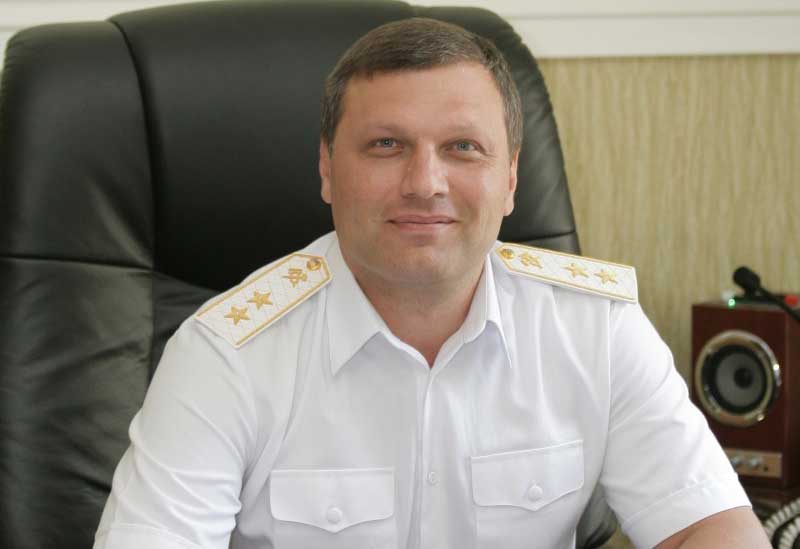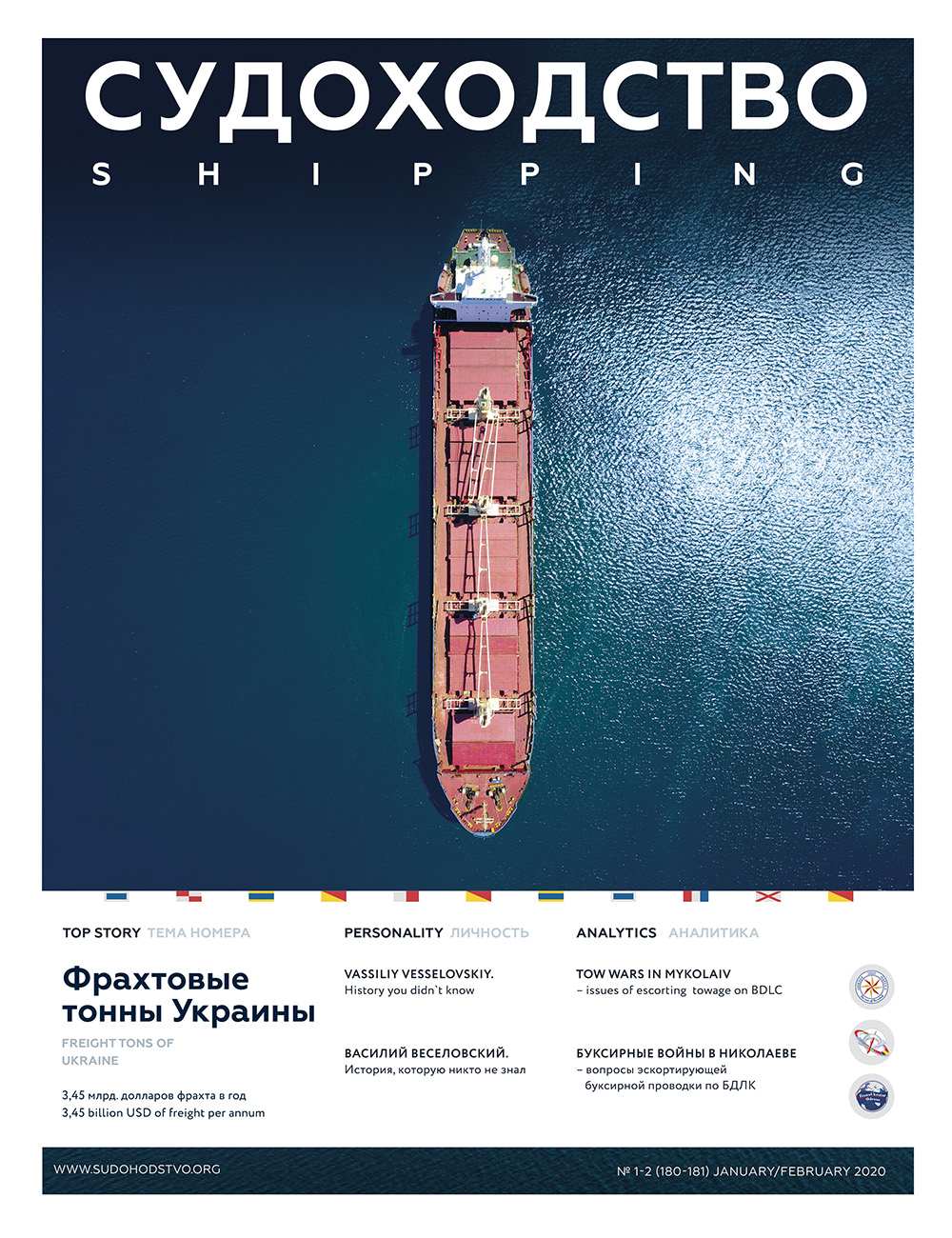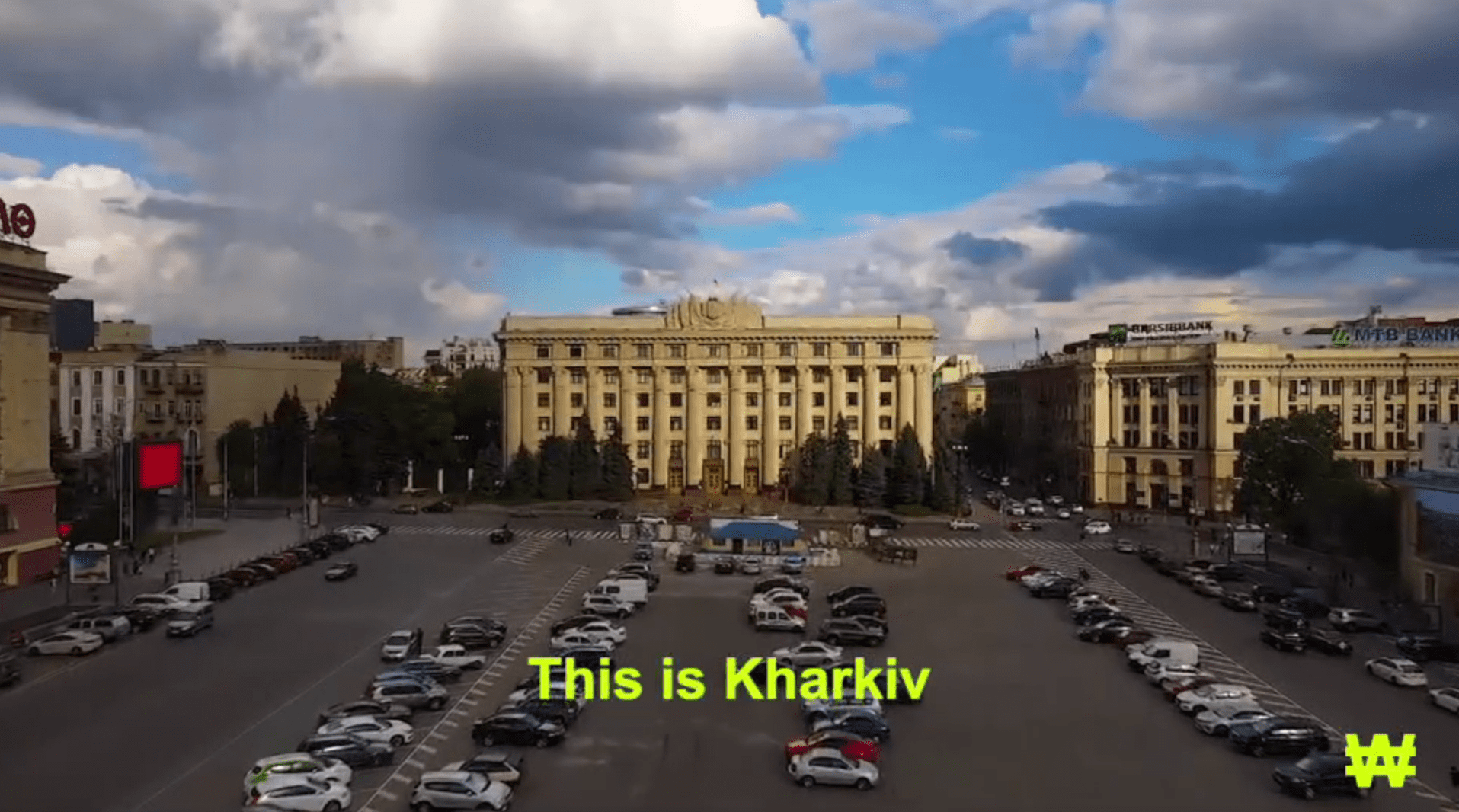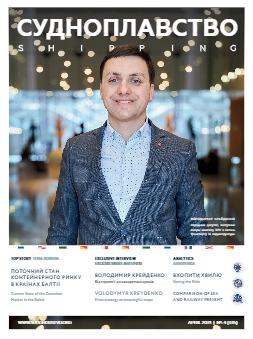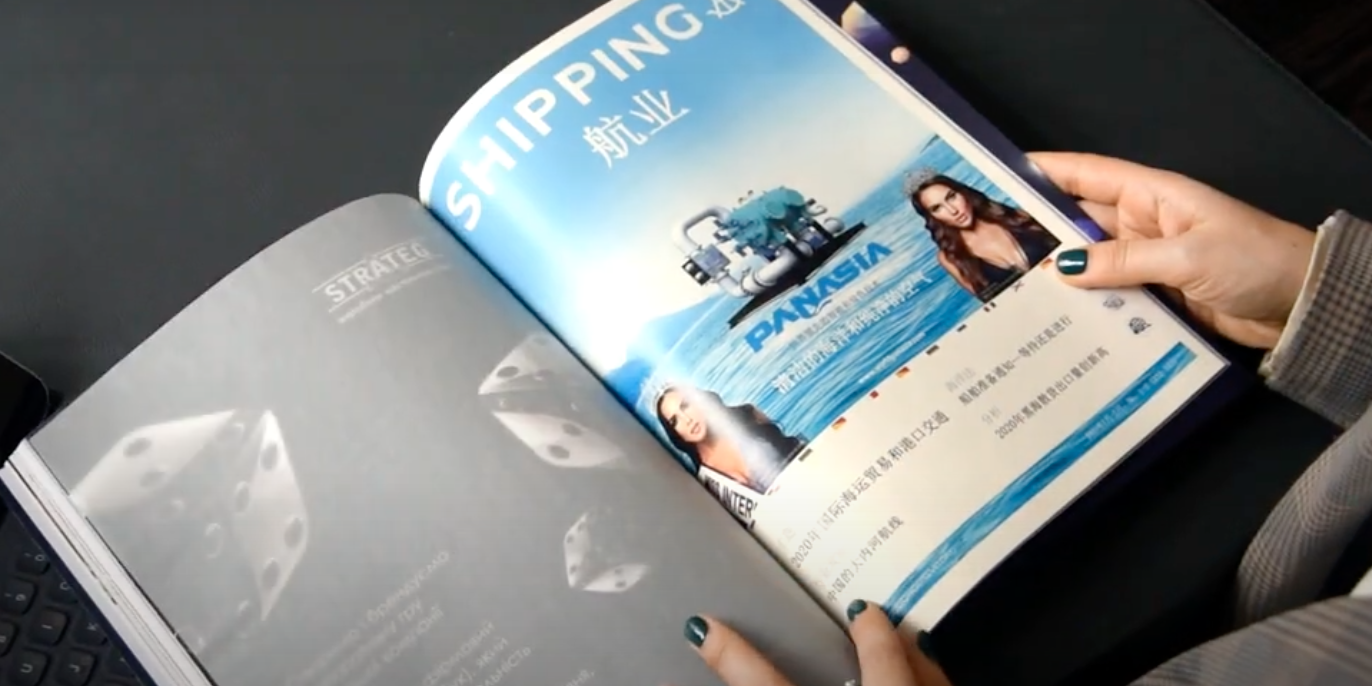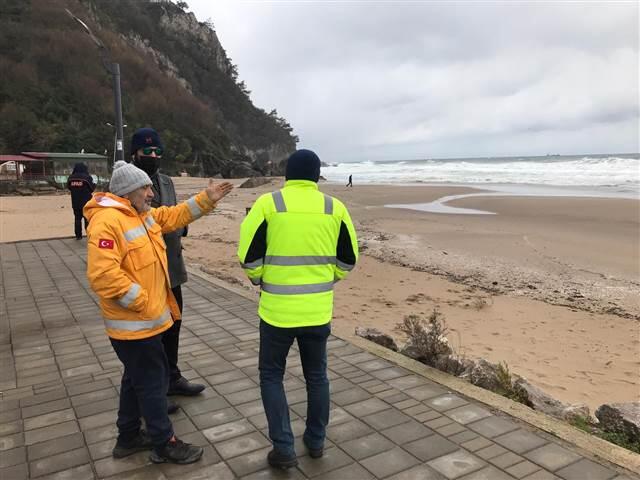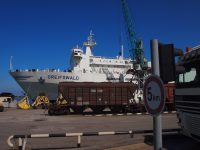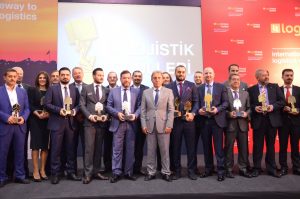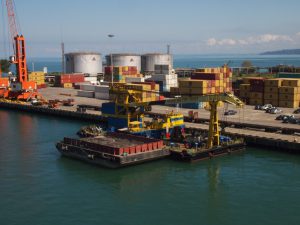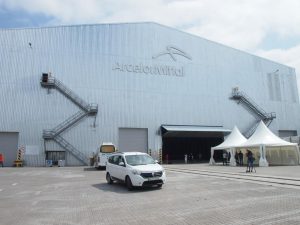
Farid Safarov
Director-General, Directorate for Digital Infrastructure on Transport
At the moment, digital technologies are being actively implemented in maritime transport. How would you explain this and which companies’ successful experiences should one refer to?
We are implementing the digitization for the following purposes:
1. To minimize business contact with state-owned enterprises.
2. In order that all basic calculations take place without human intervention, taking into account all business processes.
3. To create unified systems of interconnected registers and records to eliminate duplication of information conserved by the state.
The digitalization of the maritime industry has three key areas:
1. Digitization of internal processes in ports and everything related to the reception and dispatch of goods.
2. Issues of business interaction with both customs and port administrations.
3. Creating an ecosystem in which we can ensure the development of multimodal transport.
Regarding the first goal. There was a time when I arrived in the port of Singapore – the largest transshipment port in the world, serving a huge flow of containers. And when I met only 9 people working there – I was shocked by the fact that all processes are so automated. This is a global goal that we set for ourselves.
Why would we need this? It will allow us to compete with other ports in the Black Sea (Romania, and the northern neighbor, Georgia, etc.). It would help us be more competitive. And due to the fact that we can provide a much higher level of service, not being only a transit country on the border with Europe. For this purpose, the processes in the ports must be digitized.
This requires a large amount of investment; unfortunately, we do not have such a large amount of funding. International financial institutions, such as the World Bank and the European Investment Bank, are investing heavily in road and rail construction. But the port industry, being quite profitable, is not the central point of their interests. Our task is to define the strategy, which will show that the state understands where it is moving.
The key and global idea is to create a single window system. This task we had to perform 10 years ago, if we look at today’s realities. We understand that there is a customs service, a phytosanitary service, a border service that requests the same documents that we request under the sea window. And accordingly, our global concept, which was previously approved at the level of Deputy Minister and the relevant agencies – is to create a product based on the sea window. It will be possible to request from businesses, shipowners, shippers the maximum amount of information that is collected in one place, scattered among the main bodies and no longer submitted separately to these bodies is.
But this approach by no means cancels the control function. When we have an electronic register, when we can see: who entered the data, when the data was entered, who corrected the data, and so on. The digital footprint is preserved in the system, it’s not just a piece of paper that is written out. And if an illegal act has been committed, law enforcement agencies have the right to prosecute it.
We also want to create an electronic database that will collect the data in one place, get answers and give feedback to business. What is it for? – For the implementation of multimodal corridors. Our main task as ministries, in connection with the adoption of the law «On Inland Waterways», is to ensure that the Southern Bug and the Dnieper become part of the transport corridor. It is absolutely not convenient for a business to deal separately with the port, then separately with Ukrainian Railway, with the carrier and so on.
Currently we are implementing a project called e-cargo, which will allow us to record where the container arrives, notify the port in advance, provide key basic data, immediately apply for transport services from Ukrzaliznytsia. The main valuable issue in logistics is time. It will allow goods to move faster at a certain ratio of price and speed, it will be a competitive advantage. Our task is to make of Ukraine a transit country, competitive with other countries.
Another tool is electronic documents that are submitted: bill of lading, in the railway it is SMGS, CMR for road transport. Now the ministry has started working on digitizing of the electronic consignment note. It is a first step towards an electronic CMR. On the basis of Ukrzaliznytsia, the mechanism of introduction of electronic SMGS with other countries with a wide track has already been worked out. The bill of lading remained. Undoubtedly, this is all an international convention, agreements with other states. Currently, within the framework of Ukraine’s cooperation with the European Union and the EU4Digital project, a large-scale project is being implemented – the creation of a single transport document. Especially with regard to multimodal transportation, the fields that are specifically needed by specific types of transport will be filled in a single electronic document and this document will not require a paper copy. As a result, we will be able to combine railway, marine, automotive documents into one with a database conserving key data. If we talk about container transportation, it will differ only in the specific description of the vehicle.

The bill of lading is no different from a railway document.
And the third key point: how do we cooperate with other states. Given that this is an international initiative, we work in line with other states. This initiative was launched at the level of the international maritime organization NEC, the EU and is based on the concept of trust in the electronic digital signature. Within the state processes the imposition of EDS can be checked. In cooperation with other states, this should be controlled not at the business level, but at the state level. States must agree among themselves that all data sent from one state to another is valid and we trust it absolutely. Each country has to check at its level the conformity of all seals, the correctness of digital signatures, etc.
Two years ago, together with the Estonian Ministry, we launched a project based on Mobile ID and Kyivstar for the acceptance and imposition of signatures, taking into account the trust of Estonia in this signature. This mechanism, in fact, made it possible now to expand it to other countries, to use a single mechanism for the implementation of the international transport corridor.
Another important question is the preservation of the data integrity. The National Security and Defense Council have recently adopted the cybersecurity strategy. Within the state, there are several key centers for the protection of cybersecurity – the SBU system, the National Bank system, and the National Security and Defense Council. And we have been included in this strategy as the Ministry of Infrastructure with our CYBERCENTER. We have already created it.
Now we have a difficult dialogue with our companies to implement all these systems because in their perception, monitoring systems are not protection systems against attempts to get there, but control systems, interference inside the computer. We decided to change the concept, to carry out explanatory work and consider a regulatory mechanism by means of which we could encourage them to implement it.
Many companies representatives say: «Our plans do not include cyber – it’s just an update of some antivirus program.» And we understand that they do not want to spend money, but this is the primary task of the state. Accordingly, we are now devising a legal mechanism that will allow us to provide this free of charge. There is a clear understanding that a legal mechanism is lacking. And we are working on it.
What is your vision of «smart» ports and «smart» containers?
It’s really not easy to answer this question because there are different companies in the world that provide great solutions for «smart» containers. We can mention the American Vortex or IBM that can boast a very successfully implemented project in the port of Rotterdam. For the state, a «smart» port is essential in order to provide better services, possibly to earn extra money for additional services, and the third point is to speed up the process, because the amount of revenue de-pends on the volume of transshipment respectively.
A «smart» container is a key tool for transportation with a great future. The United States has completely switched to the container format, Europe is still at the level of using both tools, we are at the very beginning. We have 1 mil-lion TEU per year – this is quite meager, if you look at the number of our seaports and if you look at our location and the connection of the Black and Baltic Seas.
There are separate stages to follow in order to do this faster: creating infrastructural attractiveness for shipowners. We are not talking about reaching Shanghai or Singapore level, where robotic cranes quickly lift and move contain-ers, where even the cars carrying these containers are unmanned. This is a beautiful prospect for the future, but for now we need to create a basic infrastructure.

Which know-how have already been implemented in Ukraine?
In essence, the e-cargo project is the basis. There is a private company operating in the port of Odessa that has quite well digitized the port. On the one hand, it entered the territory of state competence, but on the other hand, it did so when the state was not able to do so. The same mechanism, only more developed by the interaction of other modes of transport, should be provided to the state, it should be a public service. Somewhere it should be free – free access to the sea window. Initial investments are also made within the framework of «euro money», which is allocated by the European Union for the implementation of the transport strategy. There is a separate large sum of money to be spent on digitalization, so the money is pledged. At the moment we are dealing with a technical implementation.
What international organizations can become donors in the introduction of digitalization in infrastructure? And from where we can get the necessary budget for projects?
The Maritime International Organization might be the first donor, because they have already developed many instruments and they are eager to provide them for free. This is the first toolkit. But it is quite complicated, because the process of coordination in international organization is a quite difficult issue. The next mechanism is credit funds and in this regard I refer the World Bank, the European Investment Bank. We can talk to them about it, and they are waiting for a message from the state. And the third money donors are international technical assistance projects. This is USAD KEY – Eastern European fund project funded by the US department or the UK. At the moment we are reviewing all the processes, digitize the internal key processes in the maritime administration and provide the services to seafarers. Therefore, we are currently working on the key problems of sailors.
How will the «seafarer’s e-office» affect the fight against corruption and how will it help them in their work? Will a short training on new technologies for seafarers and port workers be provided?
What is a seafarer’s office? It is a window through which a seafarer submits documents and receives answers to his/her inquiries, it is a kind of a database. But the sailor’s office in itself is nothing if the information that the sailor enters there does not go throught the right channel and in the right direction. Unfortunately, we have examples when private companies used to call back to sailors and say: «You have submitted documents, you want them to be considered in a short time – pay us this amount of money, quickly considered – such an amount, and without the «fee» your documents will not be considered». This is not a matter of cybersecurity, it is simply a matter of dishonesty of individual officials.
The main task of the seafarer’s office and all the amendments that we provide is to create a single chain of digital tools within the maritime administration, training centers, the Ministry of Health and universities in terms of diplomas. We are now trying to digitize all the processes.
The first step is to eleborate and implement a standard normative in the field. On the one hand, the presidential decree contains a clear instruction on the development of an electronic seaman’s office. Based on this, we have already developed a draft resolution, which is now being agreed with the authorities. As soon as this project is adopted, we will have a legal justification.
But from the very beginning we want the sailor’s office to be designed well, to have a system in which you do not have to duplicate the basic documents.
And we see the solution is creation of an automated information system for maritime administration. As soon as it is ready, we will have additional services: ship register, ship book, driver’s license, a lot of related things that will automatically become possible in terms of submitting documents and receiving a response. After a while, we will have in the DIYA application a car driving license, passports as well as a captain license. This task is set for a short time. It will help to avoid corruption risks in the future, and the automated system will record every step of managers. It will allow to ask the question: «Why did you refuse, if the standard prescribes the requirements and the person meets them all?». There is a budget for this, but due to chaotic changes in management, it has not yet been implemented. And our key task is to get the management ensuring that each office performs its work in a professional way.
Interview conducted by Мarina Samsonova



